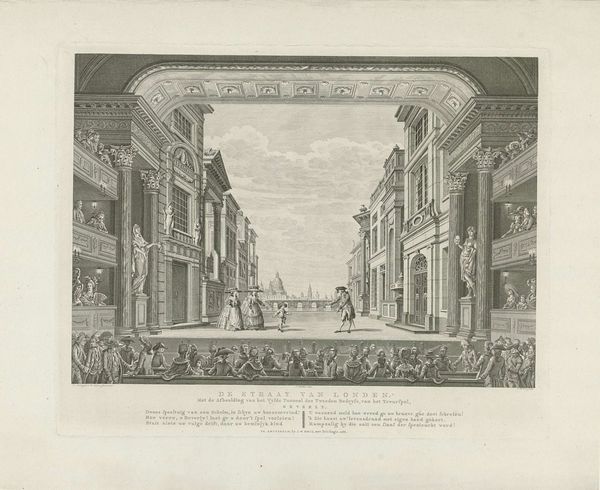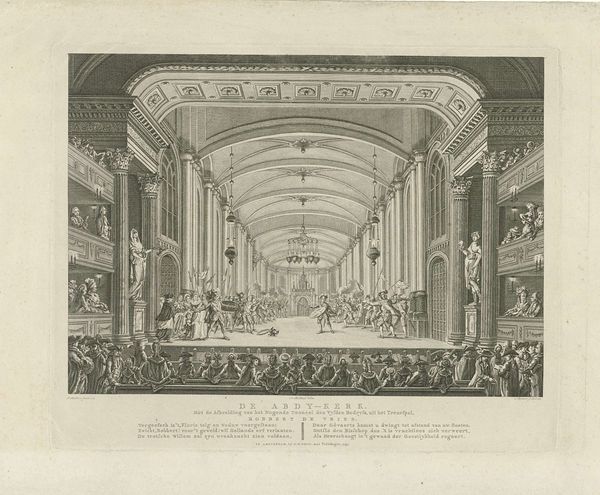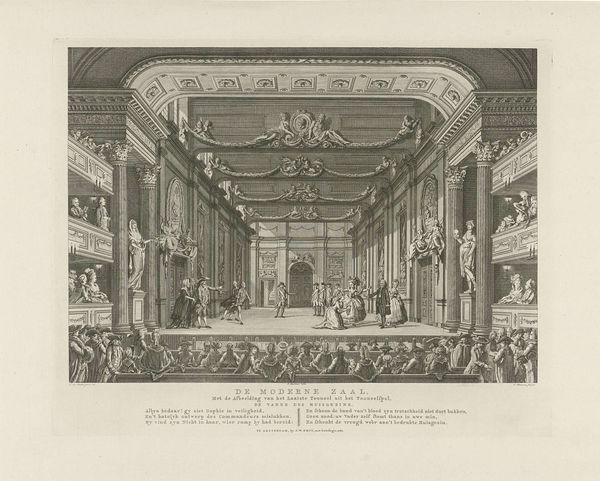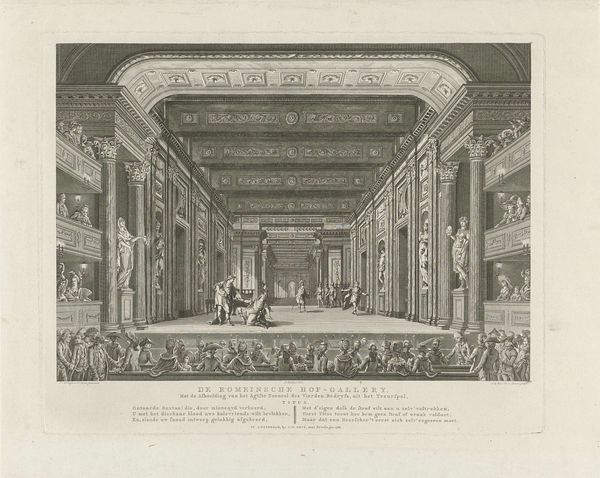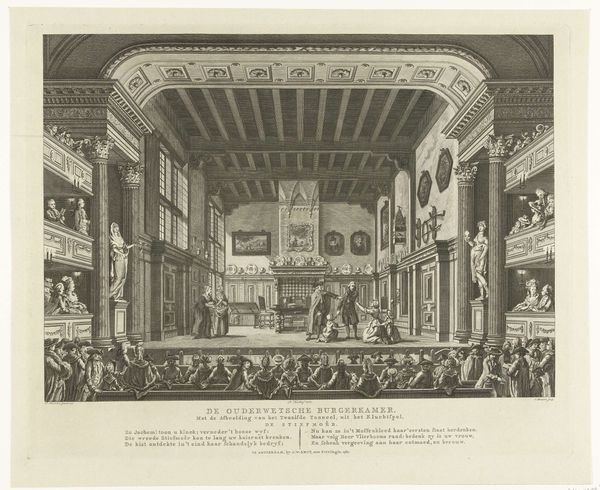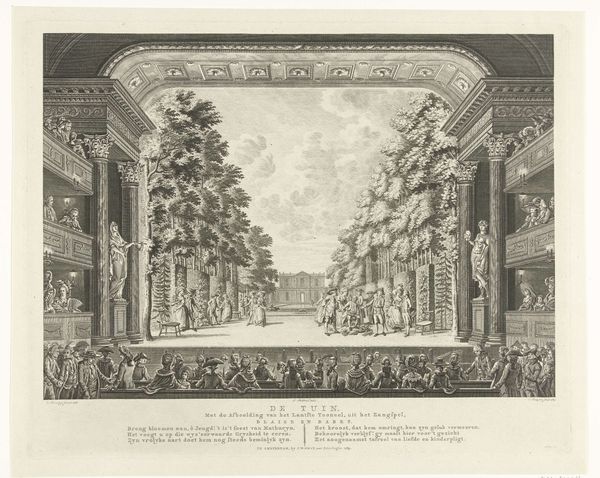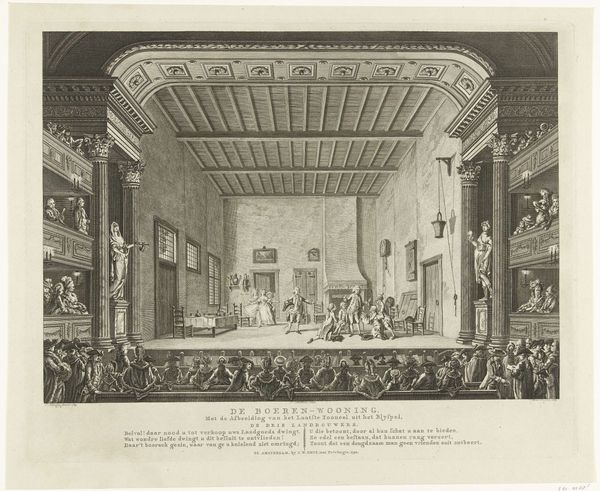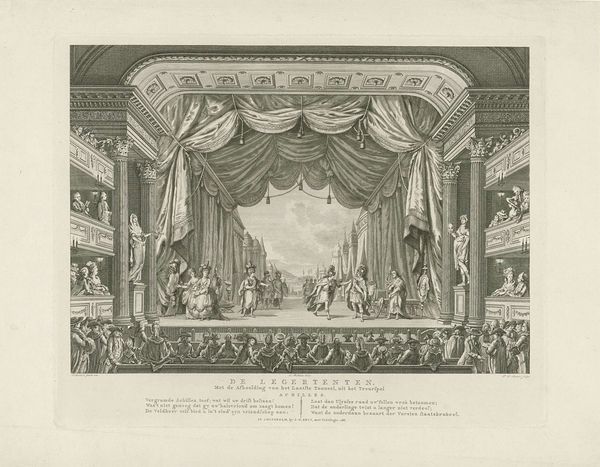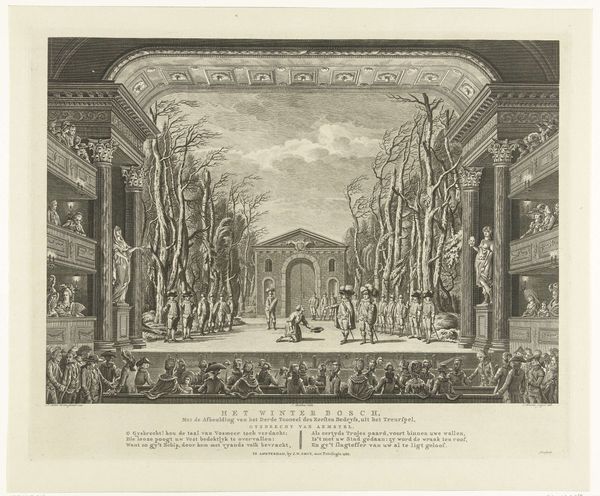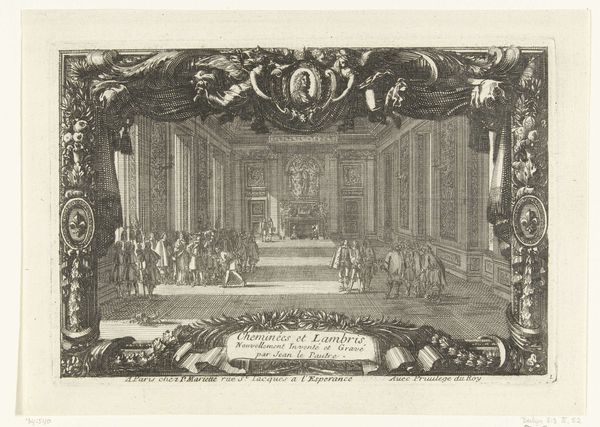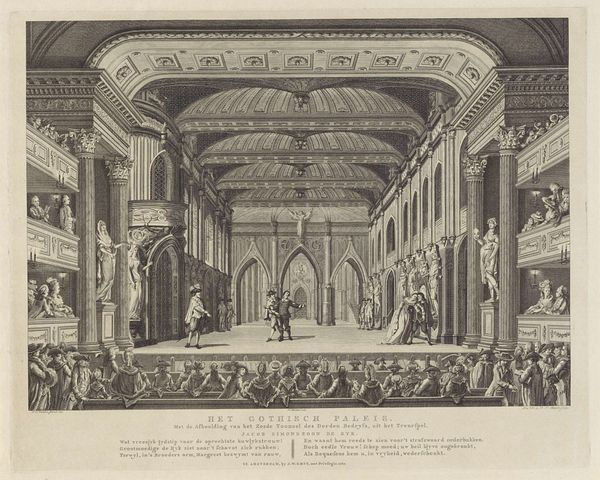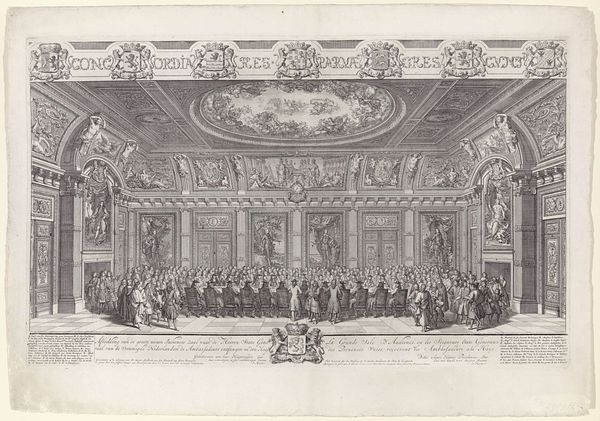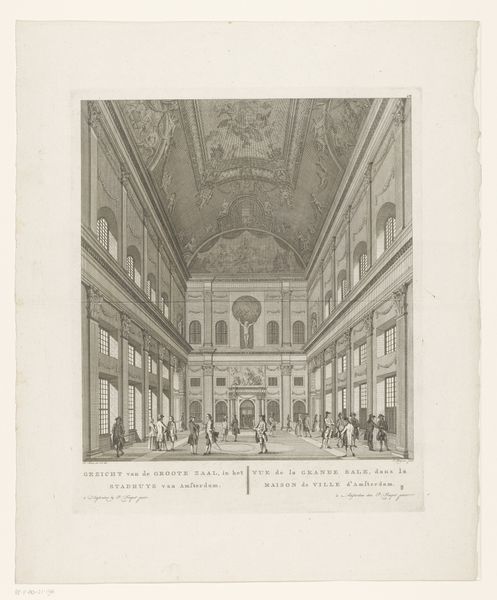
print, engraving
#
neoclacissism
# print
#
old engraving style
#
cityscape
#
history-painting
#
engraving
Dimensions: height 333 mm, width 419 mm
Copyright: Rijks Museum: Open Domain
Curator: We are looking at "Schouwburg met toneeldecor: De Hollandsche Straat" a print created around 1791 by Cornelis Brouwer. It is now housed in the Rijksmuseum collection. Editor: My first impression is one of ordered containment. The architectural framing, rendered in fine lines of engraving, focuses the eye towards a staged narrative – a street scene that almost disappears into a distant point of convergence. The high contrast gives a slightly dramatic quality. Curator: Indeed, that ordered containment speaks to the Neoclassical artistic tendencies emerging at that time. It emphasizes clarity, balance, and structure which resonates with enlightenment values. The use of engraving helps with these characteristics, enabling intricate depictions of perspective and architectural detail. I'm drawn to how the scene is simultaneously theatrical and representative of urban life, capturing a societal fascination with representation itself. What stories do you think the imagery wants to impart? Editor: Beyond the mere depiction of Dutch street life, the theatre setting imposes a frame for social reflection and awareness. Its rigid geometry emphasizes the distance between performers and audience. I read a commentary on societal roles – each participant inhabiting a pre-scripted part within this structured composition. Is the "Hollandsche Straat" literal, or symbolic? Is the setting itself an allegory for freedom of expression perhaps being ‘performed’, yet existing within strictures and prescribed limitations? Curator: That's interesting; perhaps we should consider the use of light. Shadow, depth, the presence of architecture with imposing solidity gives a visual gravitas, one that implies lasting presence through the cultural landscape. But the theatre implies transition – it might invite us to ask questions of who, when, where the "Straat" exists? Do such questions of the stage resonate even more with social contexts? It can inspire us to ask such questions of representation as part of how society evolves through self-observation and representation of memory. Editor: Precisely! Thank you. Reflecting further upon these intricate formal qualities—composition, materiality and symbolic framing allows an extended interpretation into socio-political nuances, both then, as now!
Comments
No comments
Be the first to comment and join the conversation on the ultimate creative platform.
